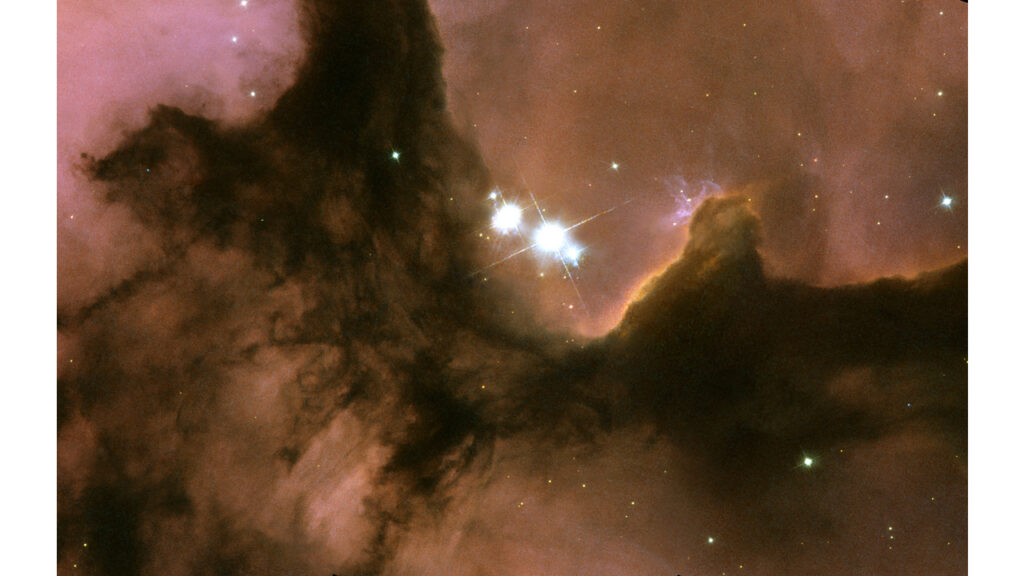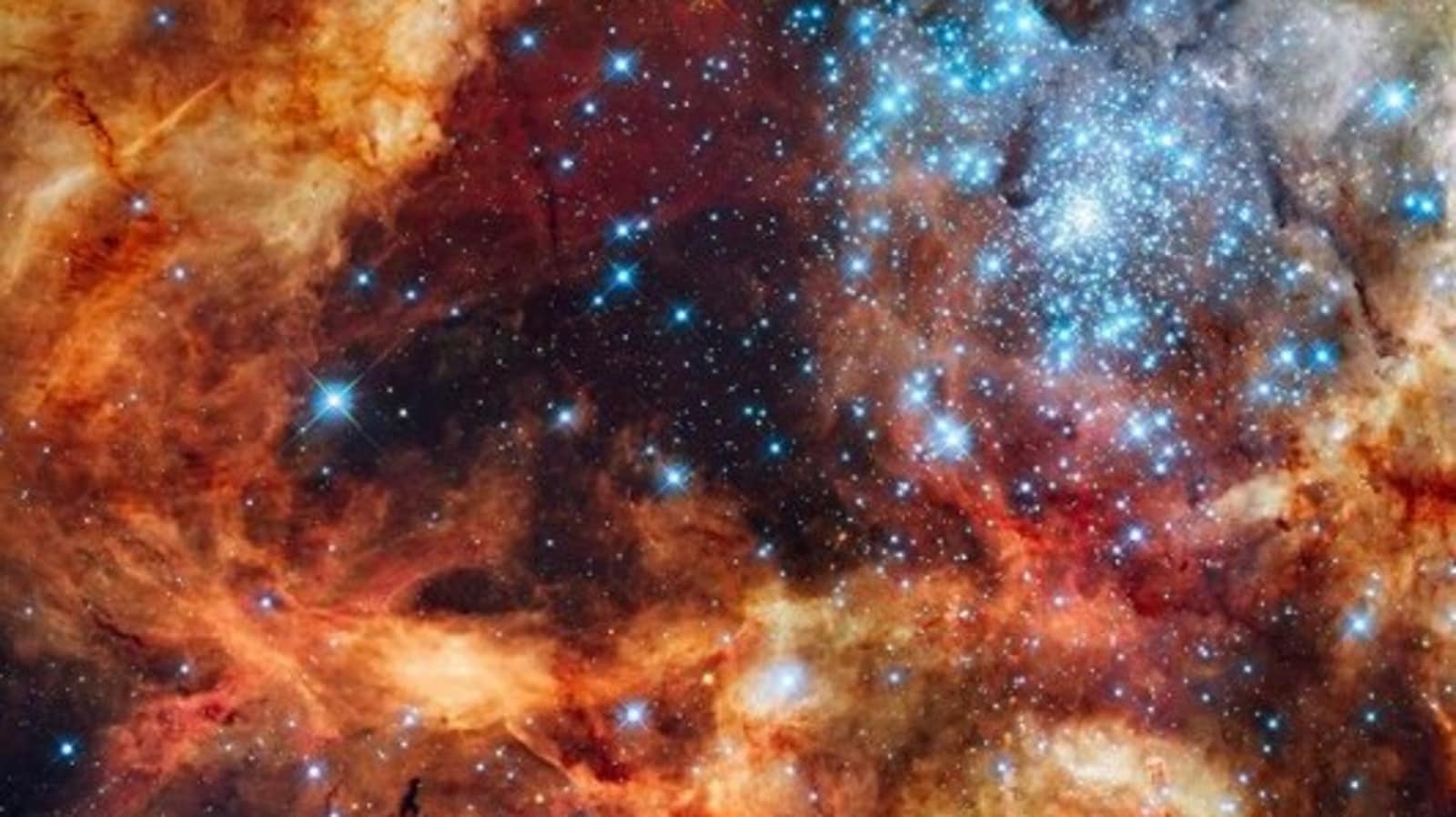The universe is a vast and mysterious expanse filled with wonders that captivate the imagination.
Among these wonders are star-forming regions, where the raw materials of the cosmos come together to create new stars.
NASA’s telescopes have captured stunning images of these regions, offering us glimpses into the birthplaces of stars.
This article explores ten breathtaking images of star-forming regions captured by NASA, each showcasing the beauty and complexity of the universe.
1. The Pillars of Creation
The Pillars of Creation, located in the Eagle Nebula (M16), is one of the most iconic images captured by the Hubble Space Telescope.
These towering columns of gas and dust are incubators for new stars.
The image, taken in visible light, reveals the intricate structures formed by the interplay of intense ultraviolet light from nearby young stars and the dense clouds of gas and dust.
The pillars are about 5 light-years tall, and the intense radiation from young stars is gradually eroding them.
The Pillars of Creation highlight the dynamic processes that shape star-forming regions and the delicate balance between creation and destruction in the cosmos.
2. The Orion Nebula
The Orion Nebula (M42) is one of the closest and most well-studied star-forming regions, located about 1,344 light-years from Earth.
The Hubble Space Telescope has captured numerous images of this stunning nebula, revealing a rich tapestry of gas and dust.
The nebula is a fertile ground for new stars, with hundreds of young stars forming within its boundaries.
The bright, hot stars at the core of the nebula emit intense ultraviolet radiation that ionizes the surrounding gas, causing it to glow.
The Orion Nebula serves as a laboratory for understanding star formation, and its stunning images provide a window into the processes that create stars.
3. The Carina Nebula
The Carina Nebula (NGC 3372) is a massive star-forming region located about 7,500 light-years away in the constellation Carina.
The Hubble Space Telescope’s images of the Carina Nebula are among the most detailed and awe-inspiring.
This nebula is home to some of the most massive and luminous stars in our galaxy, including Eta Carinae, a highly unstable star system that is expected to go supernova in the near future.
The images reveal complex structures of gas and dust sculpted by intense stellar winds and radiation.
The Carina Nebula is a testament to the violent and dynamic nature of star formation.
4. The Trifid Nebula

The Trifid Nebula (M20) is a picturesque star-forming region located about 5,200 light-years from Earth in the constellation Sagittarius.
The Hubble Space Telescope has captured stunning images of the Trifid Nebula, highlighting its unique structure.
The nebula is divided into three distinct lobes by dark lanes of dust, giving it its name “Trifid,” which means “divided into three parts.”
The bright regions of the nebula are sites of active star formation, with young, hot stars illuminating the surrounding gas.
The contrasting colors and structures make the Trifid Nebula a fascinating subject of study and a beautiful celestial object.
5. The Horsehead Nebula
The Horsehead Nebula, located in the constellation Orion, is one of the most recognizable star-forming regions due to its distinctive shape.
This dark nebula is part of the larger Orion Molecular Cloud Complex and is located about 1,375 light-years from Earth.
The Hubble Space Telescope’s images of the Horsehead Nebula reveal the intricate details of its structure, formed by dense clouds of gas and dust silhouetted against a bright background of ionized hydrogen gas.
The nebula’s iconic shape is sculpted by the radiation from nearby young stars, making it a dynamic and evolving region of star formation.
6. The Tarantula Nebula
The Tarantula Nebula (30 Doradus) is the largest and most active star-forming region in the Local Group of galaxies, located in the Large Magellanic Cloud about 160,000 light-years from Earth.
The Hubble Space Telescope has captured breathtaking images of this colossal nebula, revealing a chaotic and vibrant landscape of star formation.
The Tarantula Nebula is home to some of the most massive stars known, and its intense star-forming activity makes it a valuable object of study for understanding the processes that govern star formation.
The intricate web of gas and dust in the images resembles a tarantula, giving the nebula its name.
7. The Lagoon Nebula
The Lagoon Nebula (M8) is a vast star-forming region located about 4,100 light-years from Earth in the constellation Sagittarius.
Hubble Space Telescope images of the Lagoon Nebula showcase its stunning beauty and complexity.
The nebula is characterized by bright emission regions, dark dust lanes, and active star formation.
The central region of the Lagoon Nebula contains a young star cluster known as NGC 6530, whose intense radiation and stellar winds shape the surrounding gas and dust.
The Lagoon Nebula’s vibrant colors and intricate structures make it a captivating object of study and a favorite target for astrophotographers.
8. The Rosette Nebula

The Rosette Nebula (NGC 2237) is a large, circular star-forming region located about 5,000 light-years away in the constellation Monoceros.
The Hubble Space Telescope has captured detailed images of the Rosette Nebula, revealing its stunning rose-like appearance.
The nebula is composed of a central cluster of young stars, known as NGC 2244, which has cleared out a cavity in the surrounding gas and dust.
The radiation from these young stars causes the remaining gas to glow, creating a beautiful and complex structure.
The Rosette Nebula is an excellent example of the interplay between stars and their birth environments.
9. The Cone Nebula
The Cone Nebula, located in the Christmas Tree Cluster (NGC 2264) in the constellation Monoceros, is a striking star-forming region.
The Hubble Space Telescope’s images of the Cone Nebula reveal a dramatic pillar of gas and dust that resembles a cone.
This nebula is about 2,700 light-years from Earth and is part of a larger star-forming region.
The intense ultraviolet radiation from nearby young stars is eroding the dense pillar, creating a stunning visual effect.
The Cone Nebula exemplifies the sculpting effects of stellar radiation on interstellar clouds and the dynamic nature of star-forming regions.
10. The Cat’s Paw Nebula
The Cat’s Paw Nebula (NGC 6334) is a large star-forming region located about 5,500 light-years from Earth in the constellation Scorpius.
The Hubble Space Telescope’s images of the Cat’s Paw Nebula reveal its distinctive shape, which resembles the paw print of a cat.
The nebula is a site of vigorous star formation, with numerous young stars embedded within the dense clouds of gas and dust.
The bright regions of the nebula are illuminated by the intense radiation from these young stars, creating a stunning and complex structure.
The Cat’s Paw Nebula is a beautiful example of the creativity of nature in shaping star-forming regions.
Other Stories You May Like
Conclusion
NASA’s images of star-forming regions offer a mesmerizing glimpse into the processes that create stars and shape the universe.
These breathtaking images, captured by the Hubble Space Telescope and other instruments, reveal the beauty and complexity of the cosmos.
From the iconic Pillars of Creation to the vibrant Carina Nebula, each of these star-forming regions tells a unique story of creation and destruction.
As we continue to explore the universe, these images inspire awe and curiosity, reminding us of the boundless wonders that lie beyond our planet.
The study of star-forming regions not only enhances our understanding of the cosmos but also enriches our appreciation of the natural beauty that surrounds us.





















